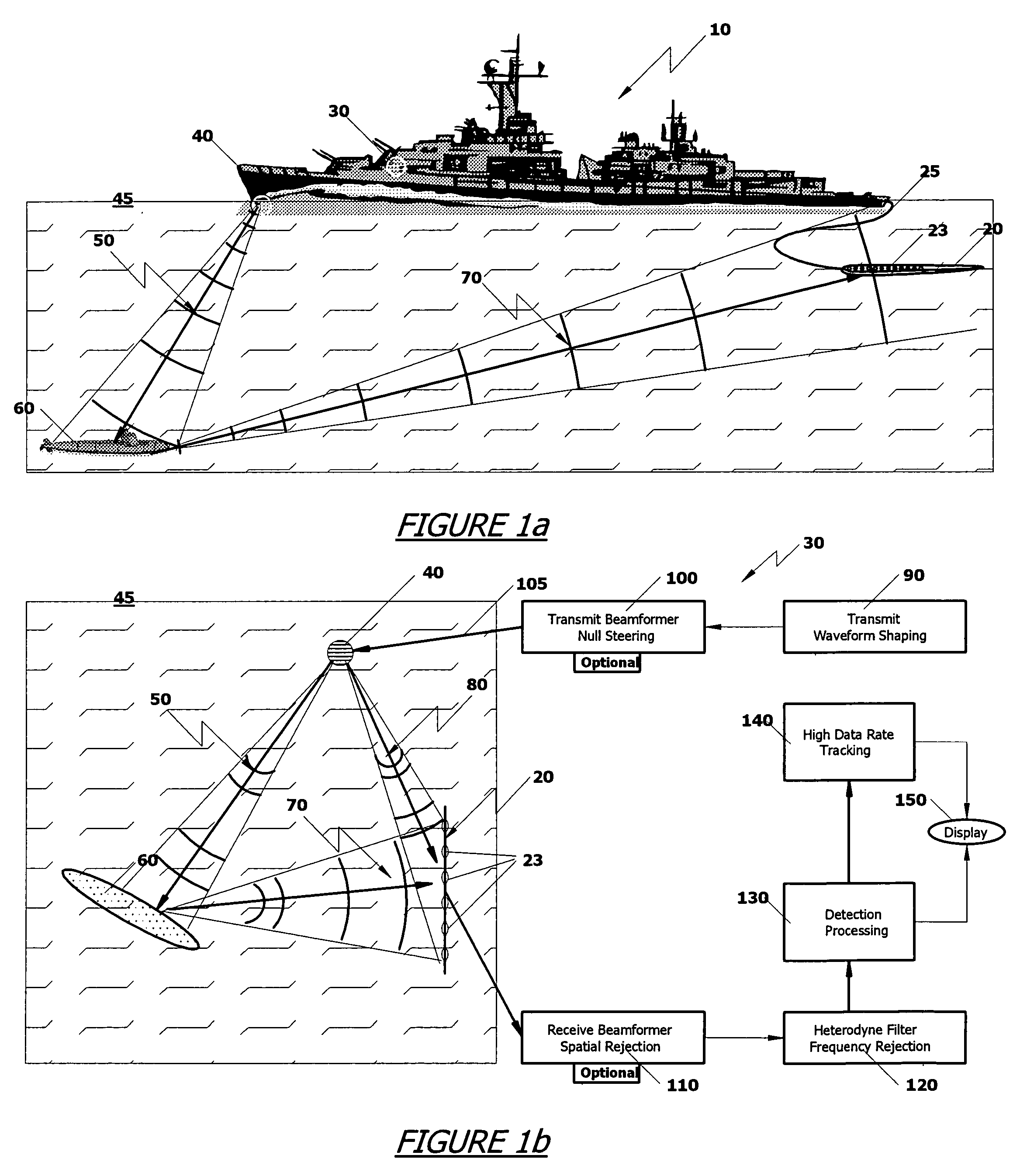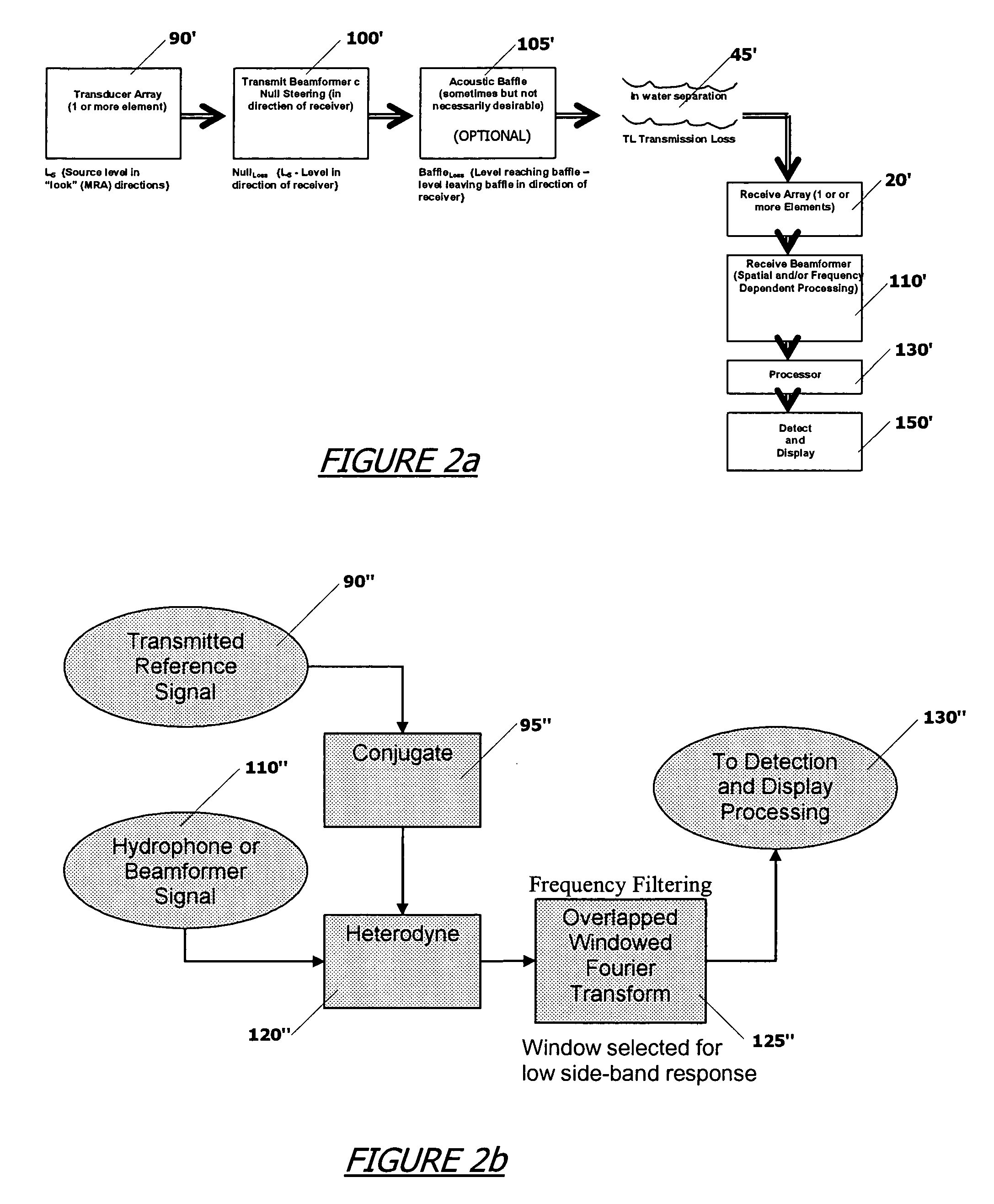Sonar system and process
a sonar and processing technology, applied in the field of sonars, can solve the problems of limiting the processing time of conventional active sonars to a very few seconds, limiting the transmission duration of conventional active sonars to relatively short pulse type transmissions, and reducing the detection accuracy of conventional active sonars, so as to improve the differential gain in reverberation and noise and achieve rapid target detection
- Summary
- Abstract
- Description
- Claims
- Application Information
AI Technical Summary
Benefits of technology
Problems solved by technology
Method used
Image
Examples
Embodiment Construction
[0029]The present invention involves an active “receive-while-transmit (RWT)” sonar system capable of continuously receiving while transmitting, and provides a method of operating the sonar system subject to linearity and rejection requirements according to the invention. The system's receiver discriminates (in bearing, range, and / or frequency) between the signal it receives from its own transmitter and the reflected signals, or echoes, it receives from the intended target(s) even while the system is transmitting. This is accomplished by incorporating into the system a receiver having a large dynamic range (the ratio of minimum to maximum input levels over which the receiver's output level remains linearly proportional to the level of the receiver's input), as explained in more detail below.
[0030]FIG. 1a shows an embodiment sonar system employed on a surface ship 10 in conjunction with a submerged craft 20 carrying an array of acoustic sensors or receivers, such as hydrophones 23 to...
PUM
 Login to View More
Login to View More Abstract
Description
Claims
Application Information
 Login to View More
Login to View More - R&D
- Intellectual Property
- Life Sciences
- Materials
- Tech Scout
- Unparalleled Data Quality
- Higher Quality Content
- 60% Fewer Hallucinations
Browse by: Latest US Patents, China's latest patents, Technical Efficacy Thesaurus, Application Domain, Technology Topic, Popular Technical Reports.
© 2025 PatSnap. All rights reserved.Legal|Privacy policy|Modern Slavery Act Transparency Statement|Sitemap|About US| Contact US: help@patsnap.com



